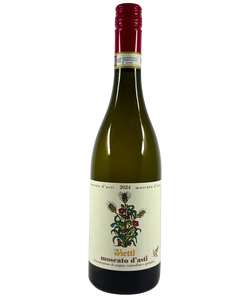If you’ve always thought of Port as that dusty bottle your grandparents pulled out at Christmas, it’s time to look again. Port is making a quiet comeback—especially among collectors and dessert wine lovers—and for good reason.
It’s rich, complex, age-worthy, and surprisingly versatile. And once you understand the difference between ruby and tawny, it opens up a whole new category of wine.
Let’s break it down.
What is Port?
Port is a fortified wine that comes from the Douro Valley in northern Portugal. It’s made by fermenting grapes like Touriga Nacional, Touriga Franca, and Tinta Roriz, then stopping the fermentation partway through by adding a neutral grape spirit (aguardente).
Why does that matter? Because adding spirit locks in the wine’s natural sugars, resulting in a sweet, high-alcohol wine—usually around 19–22% ABV. From there, it’s all about ageing, either in bottle or barrel, depending on the style.
And that’s where ruby and tawny go their separate ways.
Ruby Port
Ruby Port is all about freshness and fruit. It’s typically aged for a short time in large vats—usually just a couple of years—where there’s minimal exposure to oxygen. The goal is to preserve deep colour, bright red fruit, and youthful vibrancy.
Flavour profile:
-
Cherry, plum, blackberry compote
-
Chocolate, spice, sometimes floral notes
- Rich, bold, and juicy
Types of ruby Port:
-
Basic ruby – A young, fruit-forward blend of 1–3-year-old wines
-
Reserve ruby – Approved by an official tasting panel; more structure and depth
-
Late bottled vintage (LBV) – From a single year, aged 4–6 years before release; more accessible than vintage Port
-
Single quinta vintage – A single-vineyard (quinta) wine from a non-declared vintage; made with top fruit and still age-worthy
- Vintage Port – The most prestigious style, only declared in exceptional years. Bottled young and built for decades of cellaring
Ruby Ports are a great match for bold desserts, chocolate, blue cheese, or even red meats. If you like big reds with a touch of sweetness, this is your style.
Tawny Port
Tawny Port is aged in smaller oak barrels, which allows gradual oxidation and gives the wine its signature amber colour and complex, nutty profile. It actually starts life as ruby Port, but time and oxygen transform it into something entirely different.
Flavour profile:
-
Raisin, fig, and dried red fruits
-
Coffee, walnut, toffee, caramel
- Silky, layered, and smooth
Types of tawny Port:
-
Basic Tawny – Aged 1–3 years, light and easy-drinking.
-
Reserve Tawny – A step up in quality, aged at least 6 years with extra complexity.
- 10, 20, 30, or 40 Year Old Tawny – Indicates the average age of the blend, with flavour and concentration increasing over time.
-
Single Quinta Vintage Tawny – Produced from a single estate (Quinta) in non-declared years, often more affordable but still age-worthy.
-
Vintage Tawny – The second most prestigious style for Tawny, only declared in exceptional years. Bottled young and built for decades of cellaring
- Colheita – A single-vintage Tawny aged in barrel for at least 7 years (often much longer). Offers the complexity of extended barrel ageing with the purity of vintage character—considered by many collectors as the pinnacle of Tawny styles.
Tawny is your pick if you love caramelised flavours, nutty desserts, or aged spirits. Serve it slightly chilled for the best experience.
Ruby vs tawny: what’s the difference?
|
Feature
|
Ruby Port
|
Tawny Port
|
|
Ageing
|
Short time in large vats
|
Long time in small oak barrels
|
|
Oxygen contact
|
Minimal
|
Gradual, controlled oxidation
|
|
Colour
|
Deep ruby or purple
|
Brick, amber, or tawny
|
|
Flavours
|
Fresh red and black fruits, spice
|
Dried fruit, caramel, nuts, coffee
|
|
Best for
|
Red meat, blue cheese, chocolate, and bold desserts
|
Mushroom dishes, spiced foods, nuts, aged cheese, and baked desserts
|
Which one should you drink?
If you’re craving bold, youthful energy, ruby is your go-to—especially an LBV or single quinta vintage if you want structure and intensity.
If you’re after something more refined and complex, try a 10 or 20 year old tawny, or explore a colheita. These Ports have spent more time in barrel and develop incredible depth and nuance.
For collectors, the big decision is where you want your ageing to happen: in barrel (tawny) or in bottle (vintage ruby). Either way, Port offers some of the best ageing potential of any wine category.
Final sip
Port isn’t just an afterthought—it’s a beautifully diverse and often underrated wine style with something for every palate. Whether you lean towards fruit-forward ruby or nutty, savoury tawny, Port brings the goods in richness, complexity, and longevity.
Next time you’re scanning the shelves or picking a bottle to end the night, don’t skip the Port section. There’s a lot more there than you might expect.











